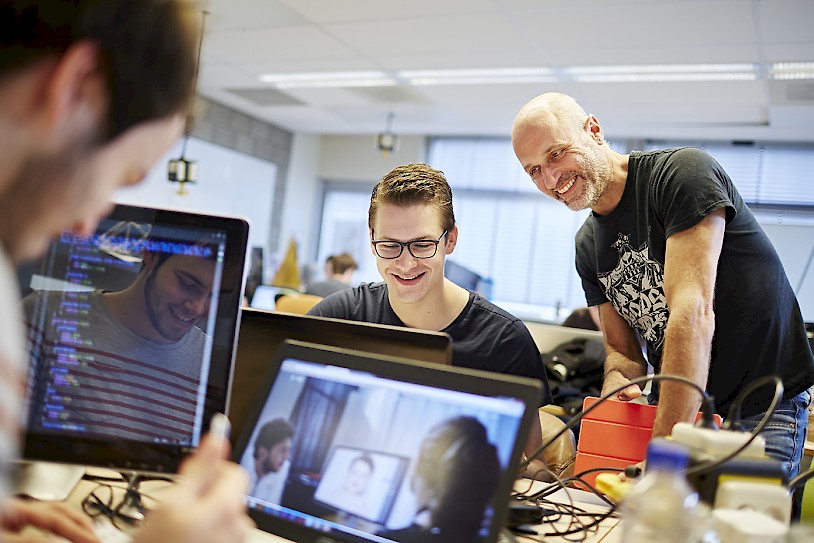Rob van Stratum and Eric Slaats on CANVAS

In 2013 Fontys Hogeschool ICT chose for the learning management system Canvas. Eric Slaats and Rob van Stratum talk about the immediate cause of this and their experiences with Canvas so far.
Eric Slaats and Rob van Stratum: "In 2012 we were confronted with the limitations of the application we had been using as a digital learning environment until then. We noticed that it could not fully meet our ambitions and therefore we went looking for a learning management system. Our talent-oriented education places a few specific demands on a platform: it has to be able to provide students according to their own pace, level and content. Furthermore, the platform should facilitate good contact with coaches, should support providing feedback and offer the possibility of organising the content in an orderly fashion. The most important reason why we chose for Canvas is that it is an open system that can be coupled to other functionalities by means of the the LTI-standard. Next to that, the system is user-friendly and it enables teachers to achieve a lot with minimal effort. What's also important: managing it is relatively low-maintenance. Canvas is being offered as a cloud solution, so that your institution does not need an own management organisation. It works very well. We want to innovate and try out new ideas in this learning platform. Our principle herein is that we would rather take the corners full speed and sometimes crash than make very slow progress. We have an innovation team that constantly comes up with new ideas - the uncontrolled zone. We will only use it for all of the students once we know it works well. Canvas supports this method of working very well.
Canvas has numerous possibilities and therefore you have to think very well about how to use this system didactically for larger groups of students. We made an example course. In case teachers want more than that, but want to stay in control. Each educational team has its own educationist and key-users who help with the implementation. Each new course gets a quality check. Our education has been organised in such a way that learning goals and tests have been formulated per education unit. Students log in on Canvas, choose an education unit and subsequently get the opportunity to perform various actions. All students have to follow a baseline, but they can also determine their own path, look for content and execute their own activities – if they can prove this contributes to their competences.
We use a dashboard with which we can register the presence and activities of students within Canvas. This provides teachers with a good overview of all the learning activities of students. It is already clear that this system is very helpful in predicting and signalling the dropping out of students. For our concept of meaningful testing, we had another app developed: Feedpulse. Testing is a permanent component of the learning process and students will be provided with feedback as often as needed. This way, students and teachers get a good idea of the student's position. Next to that, we have a content module, with which we organise the logistics surrounding the digital content. Small bits of content are fitted with extensive meta-data (LOM – Learning Object Metadata), such that they can be used in various contexts. The content module is still in the beta phase, our experimental phase. Students are generally positive about the learning environment. Some students feel like they are being observed through a magnifying glass. But in the in the end this is just a case of expectation management: once you explain to them why this is being done, they don't find it a problem.
However, there are also a few negative sides to it. The supply in the app store is so large that it's getting hard to navigate. It is an American system and we are sometimes confronted with the fact that education is different there. We are also more innovative than the system allows us to be. But we are being listened to and we notice things are definitely improving. Canvas is subject to Safe Harbor because all data is stored in Europe, but we keep a close eye on the recent statements of the European Court and the the implications these have on our use of Canvas. One can think of reports of internships and theses. This by the way does not only apply for Canvas, but also for systems like Ephorus, Dropbox and Facebook.
All in all, we are very happy with Canvas. It helps us to innovate. We want to further facilitate individual learning trajectories for our students and we aspire making our content readily available worldwide. Together with the businesses we cooperate with, we want to create open labs. In this way we can contribute to Brainport together with Canvas. Fontys Hogeschool ICT is one of the 28 institutions of Fontys and has over 3000 students."